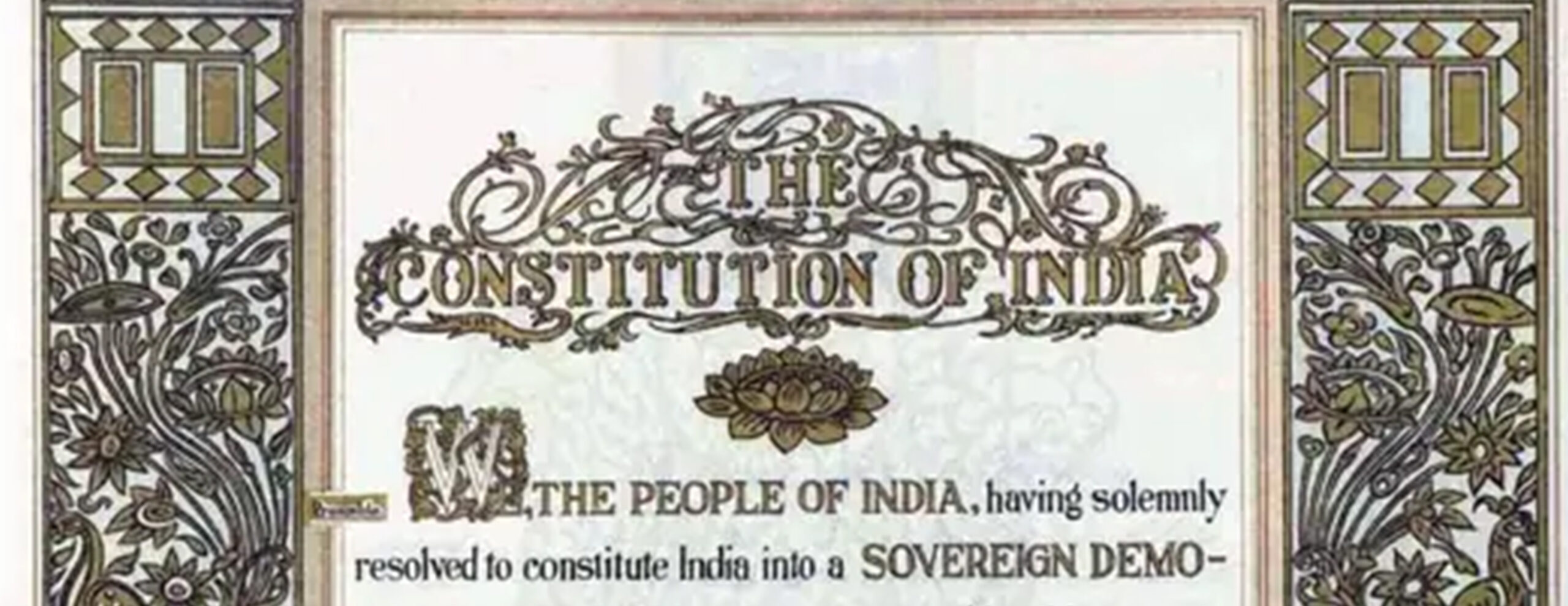The Indian Constitution is the world’s longest written constitution which provides an excellent framework for governing the world’s largest democracy. Constitution as a work of Art – The Indian Constitution is not only a consolidation of laws and regulations. But it is a wonderful repository of art. It gives us a sense of India’s rich tradition and culture. It’s a glimpse into our cultural heritage.
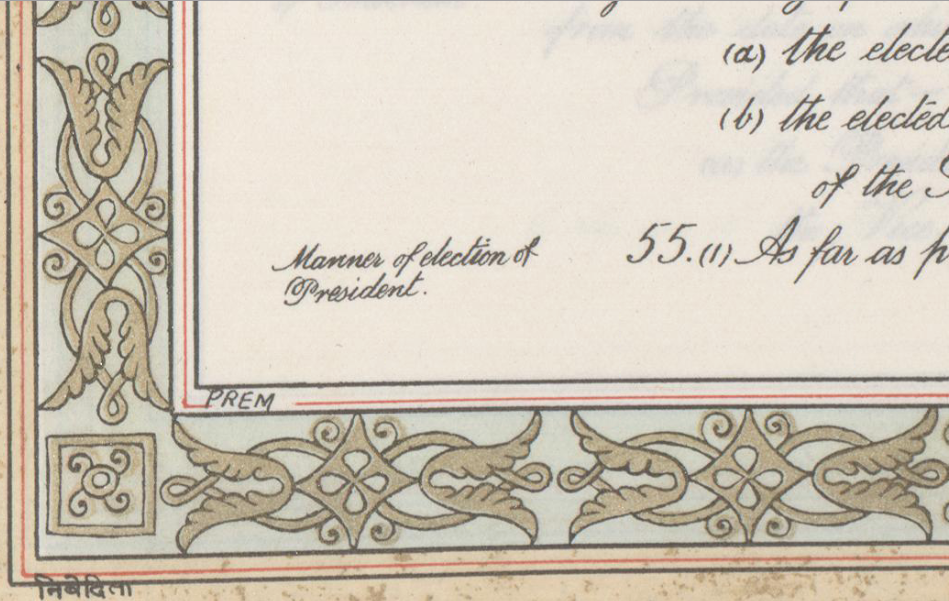
The Constitution is a handwritten, illustrated document. Each of 22 chapters of the document is headed by an illustration painstakingly crafted the team of artists led by Nandalal Bose, the principal of Santiniketan’s Kala Bhavana. The calligraphy in the book was done by Prem Behari Narain Raizada and several students of Santiniketan worked on the borders that frame each page. Artist Prem Behari wrote the text in both, Hindi (thus in Devanagari Script) and English (thus in Roman Script) reportedly, over six months. It is said that he did not take a single rupee for this work. They turned the legal document into an artifact of immense historic and artistic value. The paintings showcase the philosophical dimension of our Constitution.
Photo: Border decoration of the page with signature of Prem Behari Narain Raizada Credit: Heritage Lab
The calligraphy was done on pages that were in the hashia-style of Mughal and Sultanate inscriptions. Two types of borders are used in the entire manuscript. While all pages have a simple gold-speckled border, some at the opening of a schedule, and the page where every schedule ends, have a second inner border of gold ornament. The illustrations were created using indigenous techniques of applying gold-leaf and stone colours. There are influences of Ajanta cave paintings and the Bagh murals in its borders and illustrations. Illustrations in the document take inspirations from country’s history as well as the legends and epics of the country.
The artist Beohar Ram Manohar Singha has decorated the preamble page of the constitution. His student Dinanath Bhargava was a co-artist in the team that had designed the original national emblem of India – the Lion Capital of Ashoka.
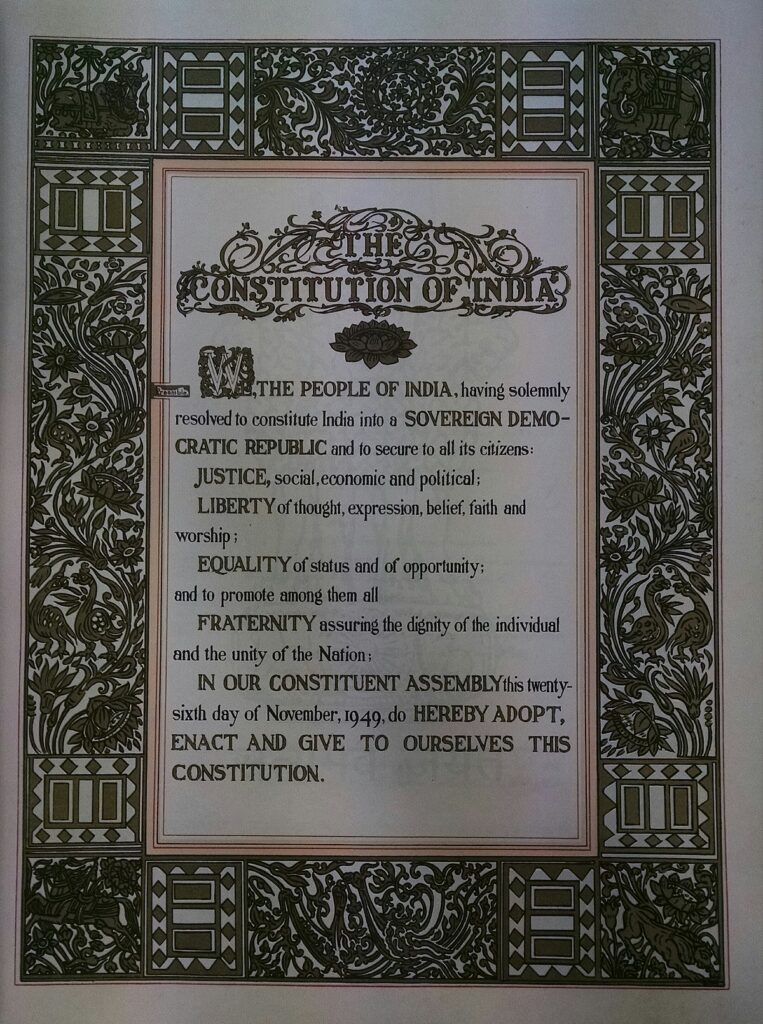
The first part of the original document of the Constitution of India starts with a popular Indus Valley seal-mark, the bull. The majestic zebu bull, with its heavy dewlap and wide curving horns is perhaps the most impressive motif found on the Indus seals.
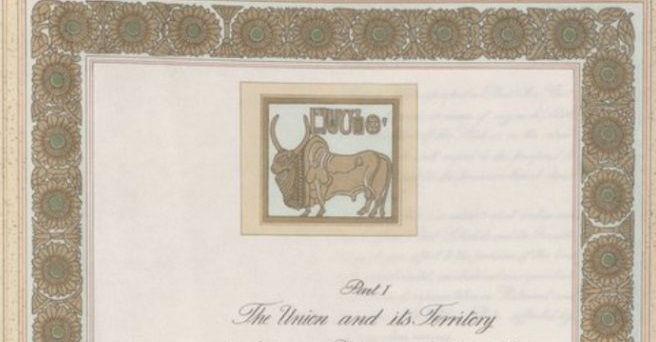
Part I: States and Union Territories Photo Credit: Twitter of Nitin Sangwan 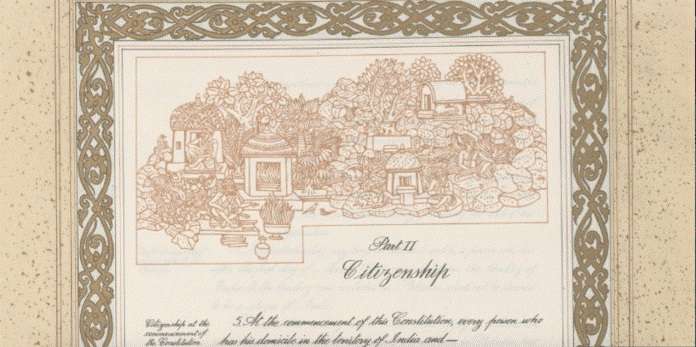
Part II: Citizenship Photo Credit: OpIndia.com
Influences of the Indian Epics
The part on citizenship is represented by India’s Vedic Age, illustrated with the painting of a Vedic Ashram – Gurukul (students sit cross-legged as around them, birds and animals sit in equal repose, and in the foreground, a teacher performs a prayer around a fire).
Part 3, on fundamental rights is depicted by an illustration of scene from the Ramayana – Conquest of Lanka and recovery of Sita by Rama & Lakshman. Incidentally, Interestingly, this image of Ram was used for a verdict (on Ram Janmbhoomi dispute) and the court thus declared Rama to be a constitutional entity. The Spirit of the Nation, our constitution guarantees us with Fundamental Rights that are to be equally upheld to all irrespective of our diverse culture.
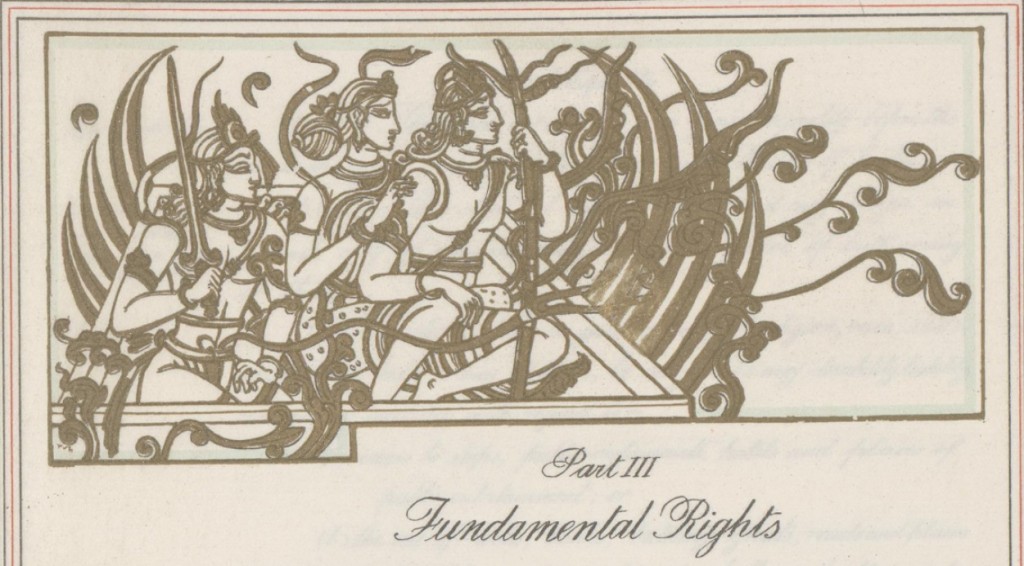
Part 4, on Directive Principles of State Policy begins with the iconic scene of Arjun -the third among Pandavas – one of the major characters of the Indian epic Mahabharata and Lord Krishna’s conversation before the war. Before the beginning of the war, Arjun’s mentor, Krishna, gave him the supreme knowledge of Bhagavad Gita to overcome his moral dilemmas.
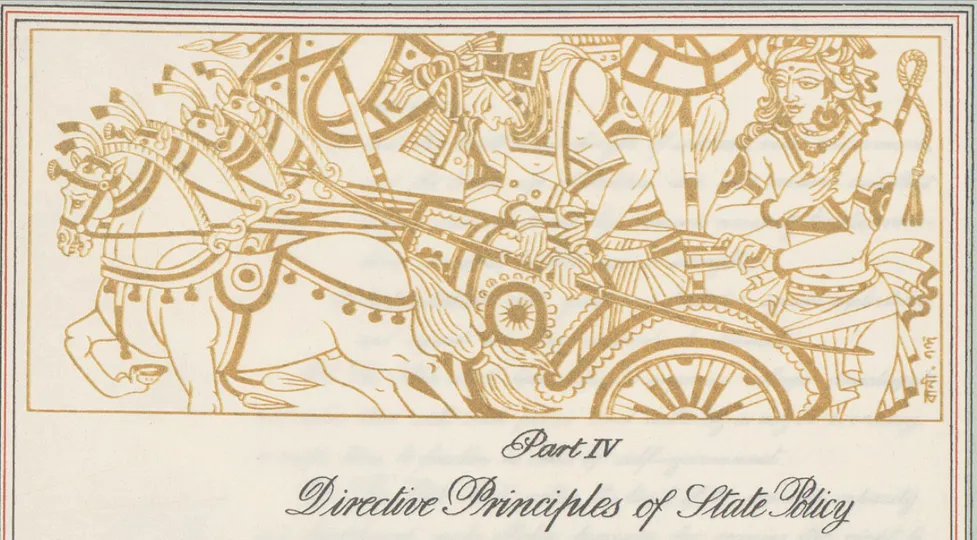
The part 5 of the constitution on rules related to the President and Vice President is illuminated with the image of Buddha’s Enlightenment under a fig tree, surrounded by admiring members of creation. Buddha’s Enlightenment is a form of “awakening” – a higher state of consciousness.
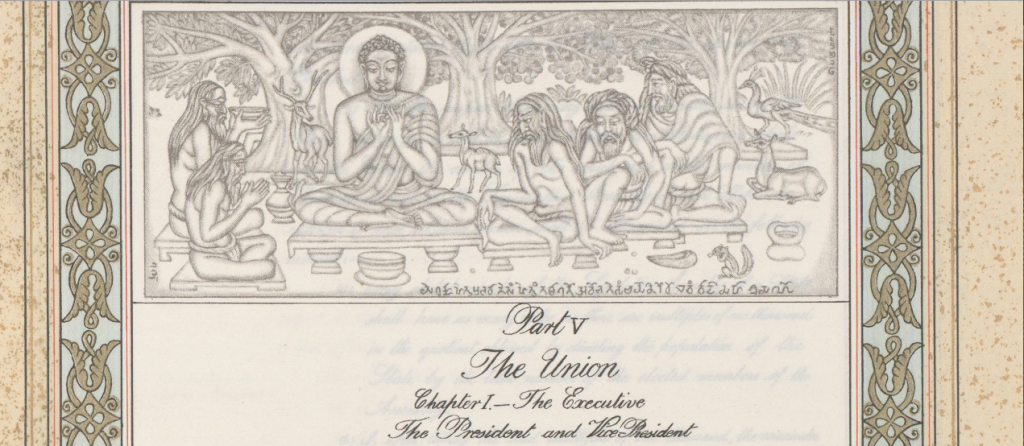
Image of Vardhmana Mahavira, the 24th Tirthankara in a meditative posture, depicting a period of huge change in society is rendered in the page after it, that is the part 6.
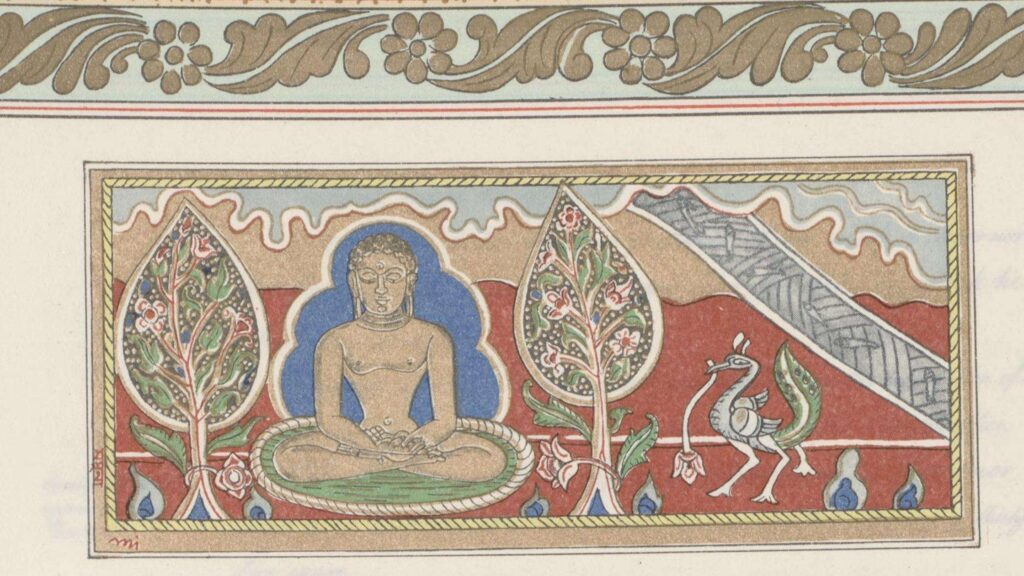
Great artistic depiction is done again by rendering the image of he dancing Nataraja from the Chola tradition on pages related to finance (Part 12). The Chola Bronze Nataraja was created as per the instructions of the Shilp Shastras.
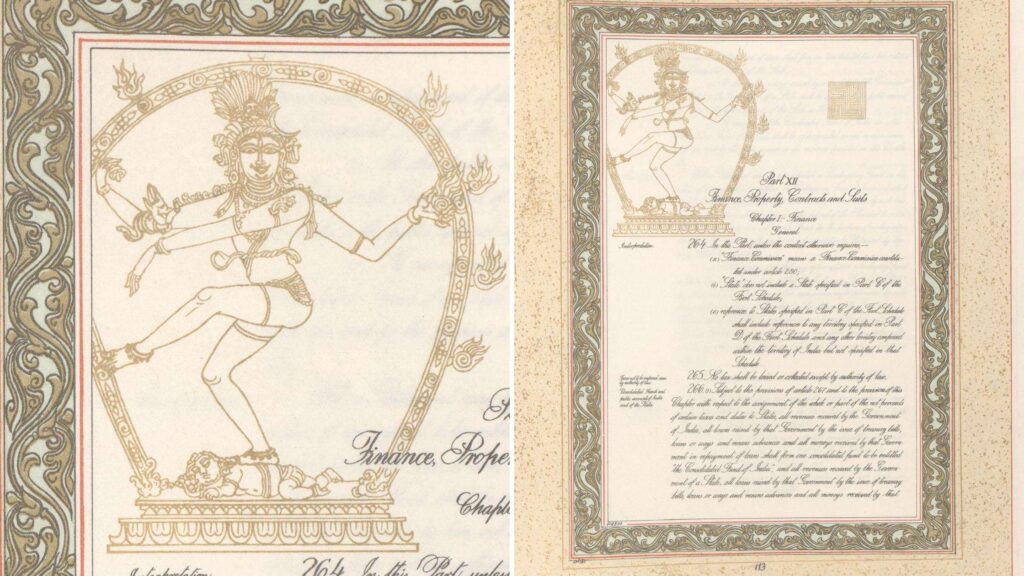
Part 13, on trade and commerce within India, is illustrated with Arjuna’s Penance (from Mahabalipuram). Descent of the Ganges, known locally as Arjuna’s Penance, is a monument at Mamallapuram, Tamil Nadu. It is a giant open-air rock relief carved on two monolithic rock boulders. The legend depicted in the relief is the story of the descent of the sacred river Ganges to earth from the heavens led by Bhagiratha.
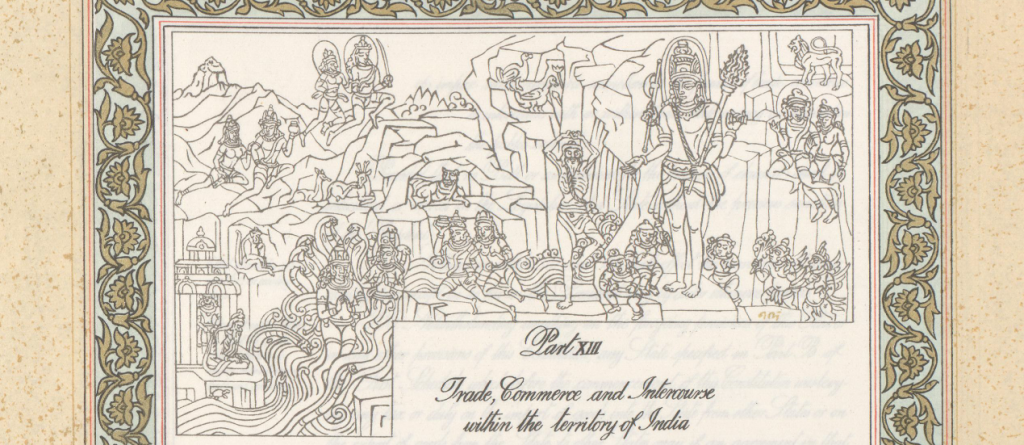
National Monarchy
Part 7 of the constitution of India, is depicted with a scene from Mauryan Period Scene the spread of Buddhism by Emperor Asoka in India and abroad. Part 9 has a scene from King Vikramaditya’s Court signifying that arts were promoted by the kingdom.
Part 14 of the constitution of India, consisting of Articles on Services Under the Union and the States, is depicted with a scene from Emperor Akbar’s court depicting Mughal rule (known for pioneering art and architecture).
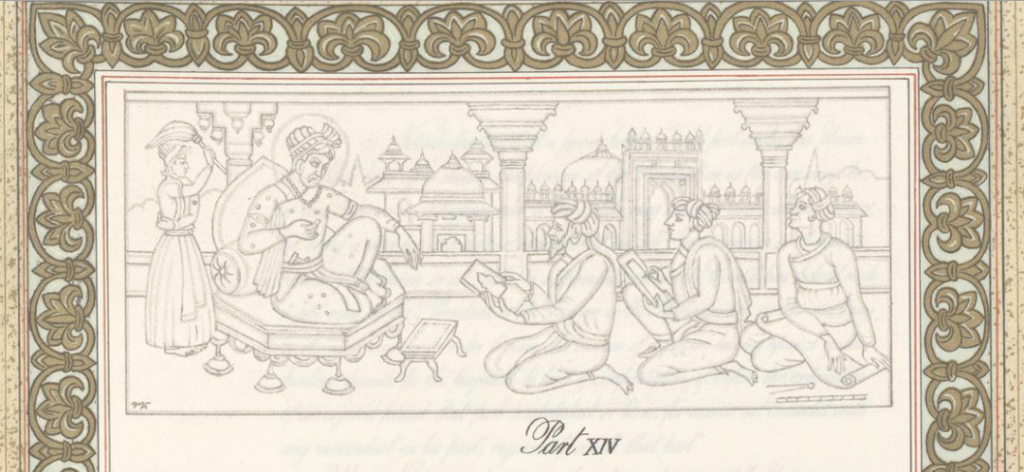
Part 15 of the constitution of India, about democracy and elections, is illustrated with images of Maratha ruler Chhtrapati Shivaji Maharaj and 10th Sikh guru, Guru Gobind Singh.
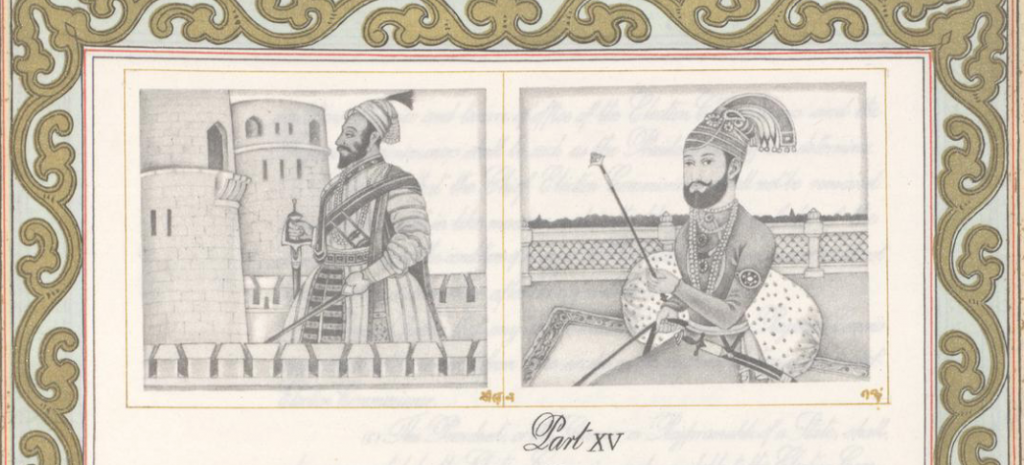
The Freedom Struggle
Part 16 of the constitution of India, about Special Provisions relating to certain classes , the heroes of the freedom struggle starting with Rani Lakshmibai, the queen of Jhansi – the only female figure illustrated prominently in the Constitution, and Tipu Sultan, the king of Mysore are depicted in a series of images.
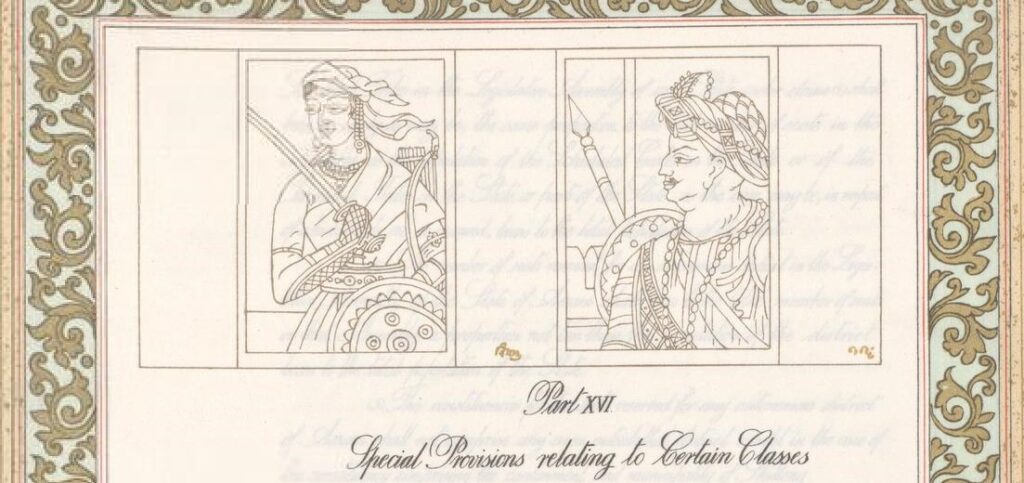
Part 17 of the constitution of India, which is about the official language, is depicted with an image of Mahatma Gandhi walking with a stick – created in 1930 to mark the Dandi March.
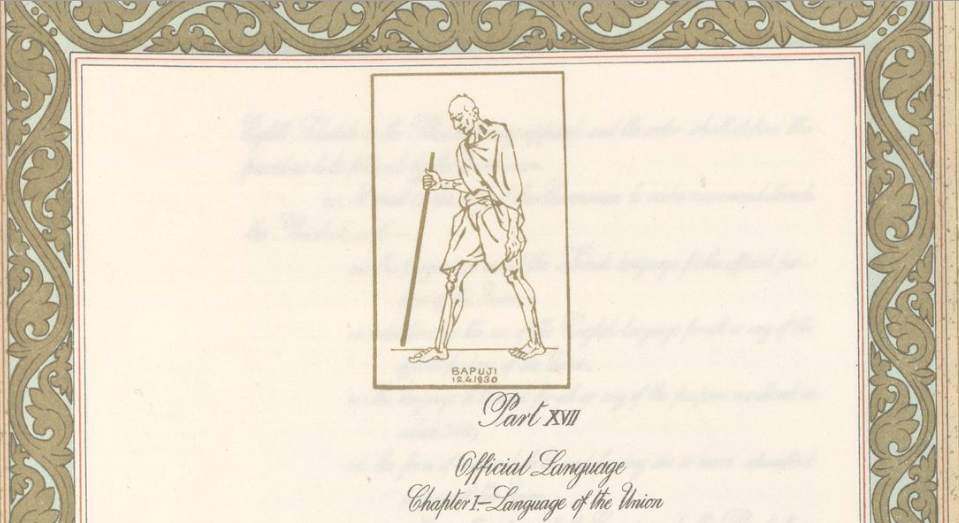
Further, Mahatma Gandhi’s tour of riot-hit Noakhali in south-east Bangladesh is illustrated in Part 17 of the constitution of India, which is on emergency provisions. He is being welcomed by women with an aarti thali in their hands,
In Part 19 of the constitution of India Subhash Chandra Bose has an artwork dedicated to him in the original Constitution of India that bears a painting of the image of Netaji Subhas Chandra Bose leading the military campaigns of his INA against British India.
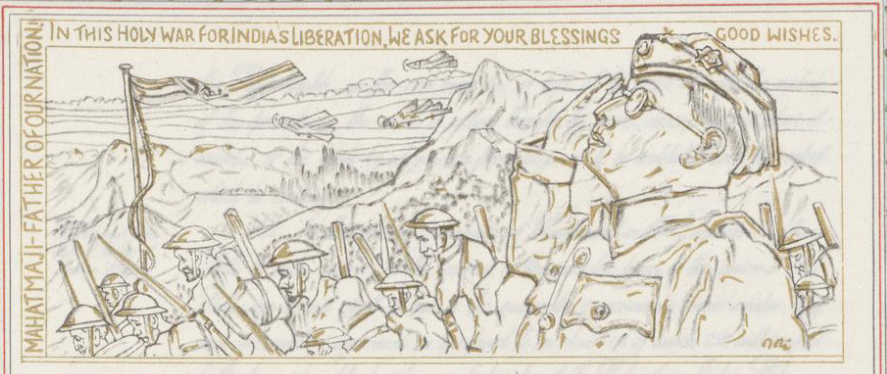
Geographical Diversity
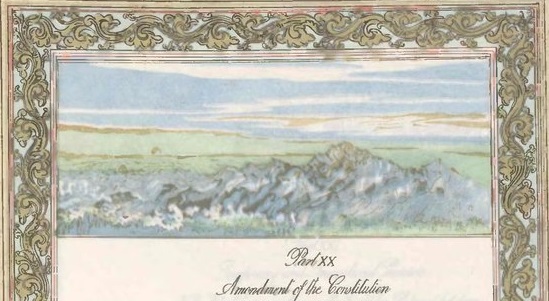
In Part 20 of the constitution of India, the illustrations also showcase the diverse geography of India – natural features of India are depicted like there is a scene of the mighty Himalayas. In Part 21 a scene of the desert and a scene of the Indian sea is sketched in Part 22, the last section of the Constitution that mentions the commencement and repeal.
Source:
- About the illustrative images on the Constitution of India. NewsOnAIR, Retrieved from https://newsonair.com/2022/01/25/about-the-illustrative-images-on-the-constitution-of-india/
2. Republic of Art: The Constitution as an Illustrated History of India | The Heritage Lab, Retrieved from https://www.theheritagelab.in/constitution-india-art/
3. The handcrafted Constitution is a work of art, The Indian Express, January 27, 2020. Retrieved from https://indianexpress.com/article/express-sunday-eye/handcrafted-constitution-india-6233517/


